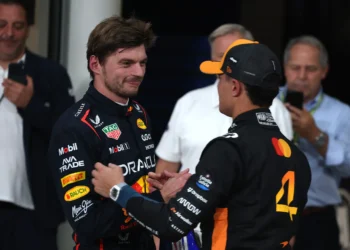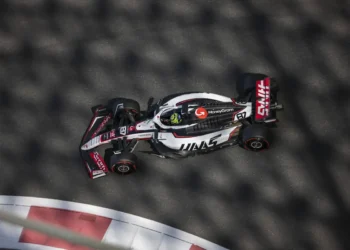Formula 1 is gearing up for an intense battle at the Bahrain Grand Prix, with experts predicting that the race won’t be decided solely by qualifying results. Unlike the previous races where pole position proved to be crucial, Bahrain offers a different challenge with its layout and track conditions.
The Bahrain International Circuit stands out as a unique venue on the F1 calendar, featuring a more conventional layout with ample overtaking opportunities. The track’s surface, known for its roughness, coupled with the scorching desert heat, poses a tough test for teams and drivers, particularly in terms of tire management and degradation.
Renowned drivers like George Russell from Mercedes anticipate that race pace and tire degradation will take precedence over qualifying performance in Bahrain. The circuit’s design, crafted by track architect Hermann Tilke, presents a mix of slow corners, camber changes, and high-speed sections that push drivers to their limits.
Moreover, the track’s abrasive surface, made of aggregate with a high granite content, adds another layer of complexity for teams to consider when setting up their cars. The strategic trade-offs between protecting the delicate tires and maintaining competitive lap times will be crucial in determining the race outcome.
With the unpredictable desert climate adding to the challenge, teams are forced to adapt quickly to the changing conditions in Bahrain. The McLaren drivers, who showed strong performance in practice sessions, remain cautious about their prospects, highlighting the importance of having a well-balanced car for both qualifying and the race.
As the Bahrain Grand Prix unfolds, all eyes will be on how teams navigate the demanding track conditions and strategic dilemmas to secure victory. Stay tuned for a thrilling weekend of racing action in the heat of the desert circuit.










